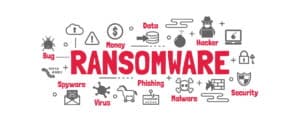Gone are the days when compliance was merely an IT matter-it is now a business risk, an issue of trust with customers, and a legal obligation all at once. Further, the compliance requirement just keeps mounting as organizations handle sensitive patient records, customer transactions, or employee data.
Moreover, just filling a checkbox will not be enough. Workforce is now scattered in different locations, using different devices and vendors. This is where the realization of the fact that a mere spreadsheet and simple policies won’t do it. Instead, businesses started thinking that you need something like a secure work-space solution-a solution that’s not just going to secure your data but help you prove compliance every step of the way.
Why Compliance Matters More Than Ever
Data breaches can be punished legally as well as financially. Enterprises would be slapped with fines and lawsuits and their reputation could also be in jeopardy for mismanagement of sensitive data. This risk increases as more people are now working outside the office.
Every employee now represents another potential entry point for security threats beyond traditional office perimeters. Home networks do not typically have enterprise-grade protections; personal devices may have outdated software; and unsecured public Wi-Fi is an invitation for interception of data. Companies that support this kind of work environment must set up a more robust compliance program to extend their security practices beyond the brick and mortar of their corporate office.
Compliance should become part of the team’s workflow with secure workspace solutions. It helps not only in preventing threats, but also provides evidence that the organization acted properly if an issue arises.
Common Compliance Standards Businesses Must Meet
Let’s break down the most well-known regulations that secure workspace platforms are built to support:
- GDPR (General Data Protection Regulation): Applies to companies that handle data of EU citizens. Requires data access controls, encryption, and consent tracking.
- HIPAA (Health Insurance Portability and Accountability Act): U.S. law protecting patient data. Requires strict access control and audit logs.
- ISO 27001: International standard for managing information security. Sets best practices for policies, risk management, and data handling.
- SOC-2: Applies to service providers storing customer data in the cloud. Focuses on security, availability, and privacy.
- PCI-DSS: Needed for companies that process credit card payments. Requires encryption, monitoring, and secure access protocols.
These aren’t just guidelines—they’re legal obligations. Violating them can lead to major fines. For a refresher on the key features that support these standards, see our post on understanding the basics of secure workspaces.
What Compliance Really Requires
You can’t just say your business is secure—you need to show it. That means having systems in place to log activity, restrict access, and enforce your policies.
Secure workspace platforms often come with these tools built-in:
- Role-based access control (RBAC): Make sure users only see what they’re supposed to.
- Session recording: Record user sessions for review or auditing.
- Audit logs: Keep a clear history of user activity.
- Automated policy enforcement: Make sure security rules are followed at all times.
- Encryption: Protect data both when it’s stored and when it’s moving.
What’s game-changing about modern secure workspace platforms is how they package these complex security components into user-friendly interfaces. Rather than requiring specialized security teams to configure each control individually, these solutions offer preconfigured security templates that align with major compliance frameworks, dramatically reducing implementation time and technical overhead.
You can see how these features tie into the broader technology stack behind secure workspace platforms.
How Secure Workspace Platforms Make Compliance Easier
Most secure workspace solutions come ready with tools that match compliance needs right out of the box. This means you don’t need to build custom systems or hire a full compliance team.
Here’s what you get:
- Pre-configured audit templates
- Built-in reporting tools
- Support for ISO, HIPAA, GDPR, and more
- Real-time monitoring to catch risks early
Some platforms, like Mindcore’s secure workspace solution, are built with compliance at their core. That means features like session isolation, endpoint control, and real-time visibility come standard. These setups work especially well for regulated industries like healthcare and finance where compliance is non-negotiable.
Avoiding Common Compliance Mistakes
Trying to manage compliance manually is one of the biggest mistakes businesses make. Others include:
- Relying only on VPNs: VPNs create a network tunnel, but they don’t offer full visibility or detailed access control.
- Shadow IT: When employees use unauthorized apps, data gets exposed.
- Lack of documentation: If you can’t prove compliance, regulators will assume you’re not compliant.
Another significant pitfall is the “set it and forget it” mentality. Compliance isn’t a one-time project but an ongoing process that requires regular reviews and updates. Regulations evolve, threats change, and your security posture must adapt accordingly. Secure workspace solutions typically include features for continuous monitoring and compliance updates to address this challenge.
Secure workspace tools help stop these issues before they happen. They bring everything into one system that’s visible, trackable, and controlled.
Cost of Non-Compliance vs. Built-In Compliance
It might seem like a secure workspace is an extra expense, but consider the alternative. A single HIPAA violation can cost over $50,000. GDPR fines can reach millions.
Secure workspace platforms reduce those risks by:
- Preventing unauthorized access
- Logging every action
- Making audits simple with automated reports
Plus, you avoid needing to buy separate tools for endpoint protection, access management, and activity monitoring. This all ties into how secure workspaces help with budgeting and ROI.
Compliance in Action: Real-World Scenarios
Let’s look at how secure workspaces help in real situations:
- A healthcare clinic uses role-based access to make sure doctors only see their patients’ files. Audit logs show exactly who accessed what and when.
- A finance company uses session recording and encryption to protect customer data and show regulators how data flows.
- A law firm uses policy enforcement to block unauthorized software, avoiding data leaks from risky apps.
We’ve seen case studies like these prove how secure workspace solutions solve real compliance challenges.
Final Thoughts: Compliance Doesn’t Have to Be Complicated
Secure workspace solutions protect your data and also serve as an assurance that you are doing things according to the regulations. Compliance becomes seamless when it is integrated into the way your team works-whether in healthcare, finance, legal, or working with client data.
Don’t treat compliance as a burden requiring manual adjustments to meet each rule; rather work with confidence that Mindcore’s solutions. The audit-ready tools, data access controls, and security-first design can help wherever your team goes.
Are you ready to make compliance as easy as it can be? Let’s talk about building your secure workspace today.



